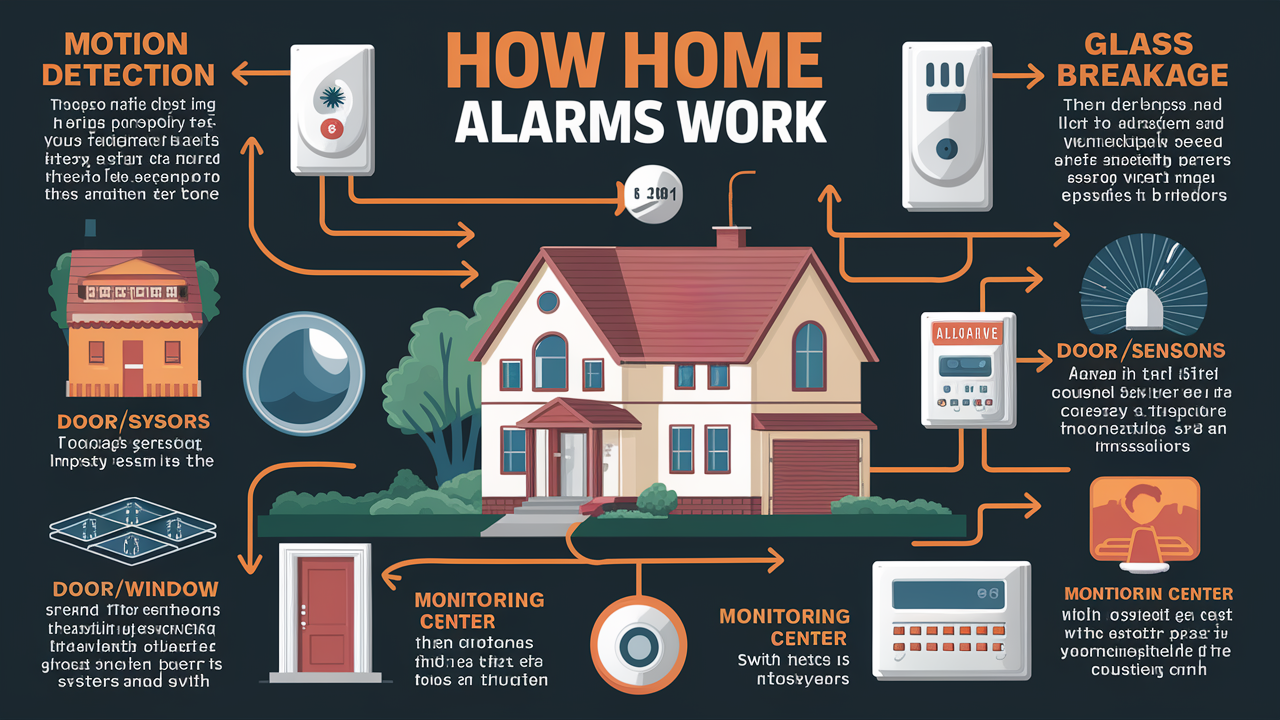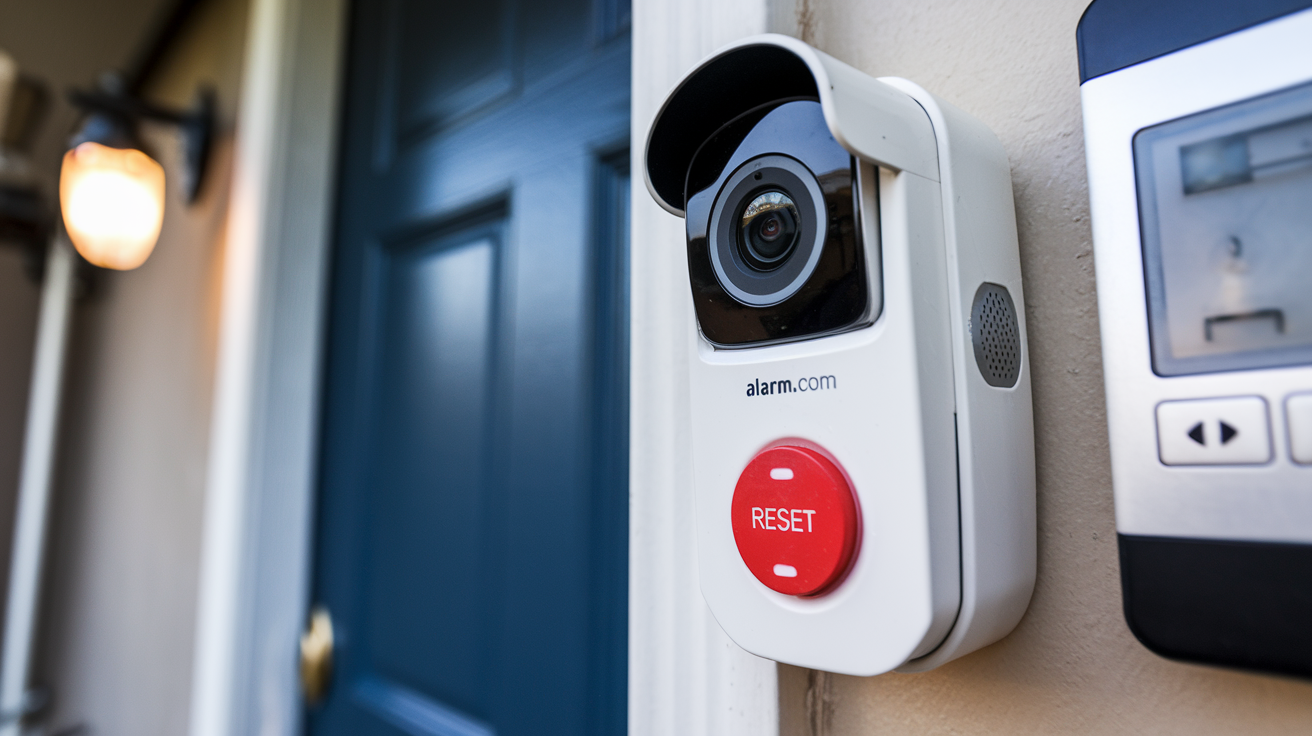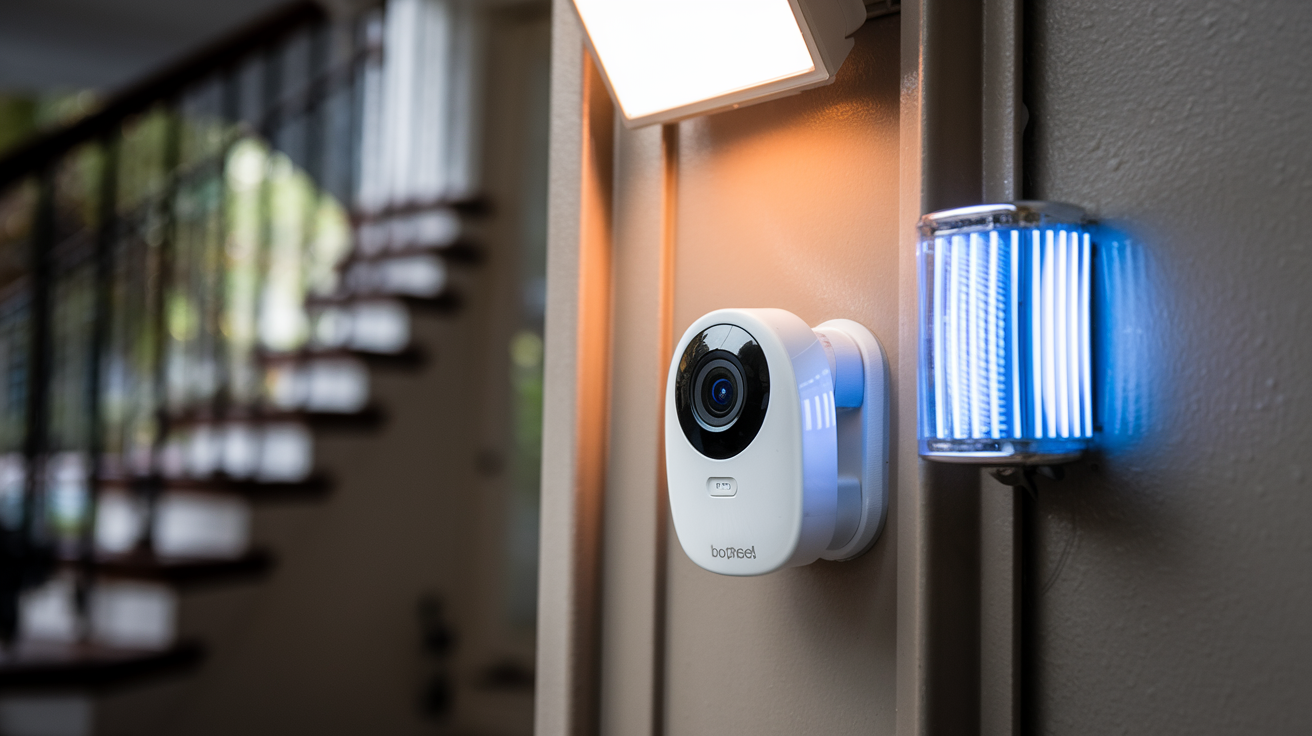Alarms for Home Use Installed at either house or any company premises, home alarms—also known as burglar alarms or security systems—tell the people inside of hazards like burglary, fire, and carbon monoxide. The device blasts a bell and signals its occupants when it senses it is in threatening surroundings. The protection they provide to households and the advantage of stopping break-ins have lately helped burglar alarms to acquire popularity.
The Home Security System works essentially in this way. The home alarm system consists mostly of sensors, alarms, and a control panel. The primary part of the system is the control panel, which hides all the computer chips and wires needed to run the sensors and react upon sensor-induced activation. Every entrance point and room in the house has sensors to identify invasions, smoke, fire, water leaks, temperature variations, etc. Common home system sensors include:
- Door/Window Sensors: To note when a door or window was opened.
- Motion Sensors: Recognise motion and thermal signature.
- Glass Break Sensors: Tune into the pitch of the breaking of the glass.
- Smoke/Heat Sensors: It means they must be able to detect smoke, additional heat, and increased speed of temperature rise due to fire.
- Carbon Monoxide Sensors: Warn against lethal carbon monoxide gas.
- Flood/Water Sensors: Preventing water leaks and pipe bursts.
If the sensor is triggered, it sends a signal to the control panel of the system. The control panel then decodes the signal and decides whether to sound a bell. Home alarm systems have their sound alarm and flashing lights that turn on when the alarm is initiated. The control panel may also notify a monitoring center as well as the homeowner through a phone call, text, or application on their smartphone.
Systems monitored
are linked and conveyed to a central alarm monitoring center through a cellular or phone line. Whenever there is an alarm, the monitoring center gets the signal and alerts the homeowner, and if necessary, the police or firefighters. This implies that a monitored system ensures that the emergency dispatch is dispatched in case of a break-in, and thus, is more secure and a source of comfort for many households. But monitored systems have monthly monitoring charges which can be a little costly as compared to the price of installing the security systems.
Unmonitored systems do not communicate with an outside monitoring service. They only make telephone calls and provide mobile alerts to the homeowners. Unmonitored systems do not have any costs that recur monthly, which makes these systems very cheap to maintain for homeowners. However, it will not send alerts to emergency responders if you are not home to offer your response.
Energy Requirements for a Home Alarm System Home alarm systems require power to function all the time which means that their power consumption must be considered. Most are powered in one of three ways:
- Electrical wiring: Existing as part of the home’s wiring system.
- Battery: Wireless sensors (batteries have to be replaced after a few years).
- Plug-in: The sensors are connected to one of the standard outlets on the wall.
Since hardwired systems are wired and do not rely on batteries to power the system, they are the most dependable but battery and plug-in sensors are easy to install since no wiring is involved. Most home systems have a backup battery installed in the control panel to ensure that the system works for 6-12 hours during power failure.
The Benefits Derived From Home Alarm System Professional systems cost money, as one has to hire a security company to install the system for an average of $300-$1,500 depending on the system, house size, and the cost per service in the area. DIY installation kits can also be bought in stores such as Walmart and Amazon and would range from $100-$500.
The most challenging task is installing the control panel, as well as installing all the sensors correctly so that the signal can reach the panel’s antenna reliably. Some of the most crucial detectors include the door, window, motion, glass break, smoke, and CO detectors which should be placed in the most strategic areas within the home. Keypads and other alarms also require installation in strategic positions. After the installation of the hardware, the sensors need to be interfaced with the control panel to be able to communicate to operate the system.
The majority of monitoring companies offer professional installations with their monitored alarm systems. Do-it-yourself systems are a good choice for homeowners who want an inexpensive security system without monitoring.
Smart Home Alarm Integration
It is also important to note that most contemporary home alarm systems are compatible with smart home platforms, including Amazon Alexa, Google Home, Apple HomeKit, Samsung SmartThings, and others. It enables you to power on and off the system, as well as check its status using voice commands through a smart speaker. It also allows automatic pairing for example when you leave the house arming the system or turn off smart lights when going to bed.
Smart integration is possible but involves buying a home security system that is compatible with the product. Some of the leading smart home security companies are Abode, SimpliSafe, Ring, Nest, and Command ADT.
The Advantages of Home Alarm Systems many benefits to home alarm systems installed
- Deters burglars: Perimeter security system signs help reduce home break-ins since people notice the signs, and this discourages them from attempting to break in.
- Rapid emergency response: Monitored systems allow dispatch if the homeowner cannot call for assistance during a burglary or when having a heart attack.
- Mobile access and control: Use your smartphone to supervise and regulate your system from the comfort of your home or any other place.
- Home automation: Enable the security system to work in conjunction with other smart home systems.
- Peace of mind: Be assured that your home and family are guarded around the clock.
- Insurance discounts: On the other hand, some providers offer up to 20% discount for a monitored system.
Yes, home alarms can be expensive to install and possibly monthly monitoring fees but the crime-fighting, timely dispatch during emergencies, and security are priceless insurance for the average homeowner. Some factors should be taken into account when choosing the most appropriate home alarm to keep your home safe.
Protect your home today with ADT’s top-rated security solutions!
Call now at +1 877-470-7879 to get a free consultation and find out how you can secure your home with the best in the business. Don’t wait—ensure your peace of mind with ADT!







